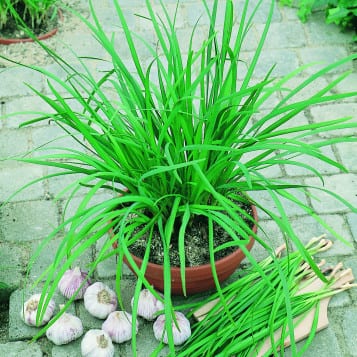By Steve Mosco
Personality goes a long way, even in beer. Far removed from the stale sameness of big-name beer companies, micro- and nanobreweries throughout Long Island are offering unique options to the brew drinker who craves more than watered-down sips from cold-activated, color-changing cans.
It’s no secret that Long Island is overflowing with craft breweries. What craft beer devotees may not know is how much work — and ingredients — go into keeping breweries afloat and churning out dynamic, foamy goodness. It’s more than just the expected barley, hops, water and yeast. Brewmasters must employ peppery grains and floral bouquets, enlivening fruits and balancing bitterness along with equal measures of patience, flexibility and plenty of capital.
Born in basements and garages, with and without spousal approval, homespun ale artistry on the Island often froths forward from conversations over really bad beer. Those initial beer-side chats about the betterment of the drinker’s experience sometimes morph into a far grander dream of bringing beer brewed with care to the masses.
Port Jeff Brewing Company has grown an enthusiastic following, especially on the local level. Beer drinkers in Port Jefferson hoist the brewery’s offerings with a healthy dose of local pride, and crowd the brewery’s tasting room, open daily from noon to 8 p.m., along with brew followers from beyond town limits. The brewery also hosts free tours every Saturday at 4 p.m., where visitors learn about the brewing process for popular Port Jeff beers like Schooner Pale Ale, Port Jeff Porter and more.

“For the first few years, it was just a hobby that was cool,” said Michael Philbrick, who went from 10-year home brewing hobbyist to head brewmaster at Port Jeff Brewing Company in 2011. “When we first opened, there were no breweries even close to here. Now there seems to be another five every few years.”
All of these breweries are proving to be a financial boon to New York State. According to a report released in April by the New York State Brewers Association and the New York Wine & Grape Foundation, the craft beer industry in the state grew 59 percent from 2013 to 2014 — with a total economic impact estimated at $3.5 billion.
But even with those growing numbers and the industry’s popularity with imbibers, Philbrick said the craft beer industry only accounts for a small shred of the market share on Long Island — domestic juggernauts and foreign imports still rule the cooler.
“Of all the beers on the Island, you’re looking at a very small share of the market for craft brews,” he says. “Amazingly, there is still room to grow.”
Philbrick believes this produces a healthy amount of camaraderie among brewmasters on Long Island. They all want each other to survive and thrive in this industry.
“We all do the same events and deal with the same people,” he says. “And we all got into this for the same reason: the love of beer. We learn about the business from each other and we do group purchasing of equipment. I ran out of bottles once and the guys at Great South Bay [Brewery] helped me out. And I know they’ll call me for a certain hop or grain.”
Port Jeff has also worked with Spider Bite Beer Company, a fledgling brewery out of Holbrook. Spider Bite’s founder and co-owner, Larry Goldstein, agreed with Philbrick that it makes no sense to undercut other local breweries in order to get ahead. Goldstein routinely works with Barrage Brewing Company in East Farmingdale, participating in tap takeovers at bars together and lending each other equipment.
“We’re only going to survive if we cooperate,” he said. “This business is way too expensive to be selfish.”
When Goldstein first decided to back out of his chiropractic practice in favor of the brew life, he was floored by the sheer amount of operational expenses. But he pushed through, buying equipment fit for a laboratory, kegs and key ingredients to achieve some truly remarkable flavor profiles.
“It’s a huge investment even to just get started,” he says. “You have to buy all the equipment, all the kegs, the ingredients. And everything is expensive. It’s insane.”
The insanely enticing flavors of Goldstein’s Boris the Spider Russian Imperial Stout, Rophenia Belgian Quad and more are available to imbibe at Spider Bite’s Holbrook tasting room, open Thursdays, 4 to 8 p.m.; Fridays, 3 to 8 p.m.; and Saturdays and Sundays, noon to 4 p.m.
Even considering the sky-high cost involved in the production of beer, each brewmaster says they would rather work their fingers to the bone and push their bank accounts to the brink doing what they love than anything else. Obstacles often stand in the way — a busted septic tank here, an uncooperative municipality there — but most brew heads learn to roll with problems in order to get their product to the public.

For Jamie Adams, founder of Saint James Brewery, this is no vanity project. There is purpose behind all of this hard work and investment. Established in 2012, Saint James is a New York State farm-certified brewery that creates Belgian-inspired ales in a farm-to-pint initiative. Culling fresh ingredients like apricots, raspberries, barley and select spices from local farms, including Condzella’s Farm in Wading River, Adams and his wife and co-owner Rachel are getting back to the roots of beer making.
“We want the customer to understand and appreciate the value of a locally brewed product,” said Adams. “For us, it’s all about Long Island. Whether it’s fruit farmers on the East End or honey farmers or local barely, the goal is to enlighten people and help appreciate the value of working with local raw materials.”
A former clerk in the New York Stock Exchange, Adams is a self-taught brewer and meticulous worker. Those days on Wall Street are a distant memory, but his worker-bee mentality has remained intact. He now focuses on raising his standards with every batch of farmhouse Belgian ale.
“Chances are when someone is drinking our beer, they are having it for the first time. So each batch we make has to be perfect,” says Adams. “This is a higher calling for me. The agricultural economy is so important to everything we do. And if it grows, it can help this island tremendously. It’s not cost effective for all brewers to use locally grown ingredients, but we want to get to the point where that is the norm.”
Adams wants the emboldening medley of flavors so singular to craft beer to change the mind-set of beer drinkers and distributors. And like his beer-brewing brethren, he wants to pop the cap on the craft industry’s share of the Island’s beer market.
He envisions a time when local craft breweries can claim 20 percent of the market — a monumental task that actually seems achievable when comparing the charisma and personality of craft brew to the demoralizing drudgery of mass-produced beer.
“Our job as brewers is to work together to get bar owners to put more craft beers on tap,” he says. “I believe if you give consumers a local option, they will take it. And that is how we grow this business.”

































